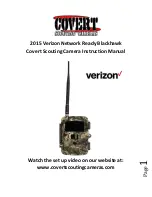
V1.02
Thom Hogan’s Complete Guide to the Nikon D300
Page 423
• You’ve told the camera to pause!
The values set in
Custom Settings #A1, #A2, and #A4 can cause the camera
to alter whether the camera is set to release priority and
no tracking, or has some sort of focus priority and tracking
it needs to do before the shot.
Suggestion:
use Continuous
Servo when shooting speed is an issue.
• The self timer is set
. See “Self Timer” on page <426>. This
one is my favorites at workshops: the student comes to me
and says their camera isn’t working. About that point the
shutter goes off and the student remembers that they set
the self timer.
Suggestion:
when shooting speed is
important, you should be setting your camera to
C
H
. If
you force yourself to always verify that, you won’t be set
to self timer mode.
• i-TTL flash is active
. Since the preflash is measured by the
1005-element CCD in the viewfinder, the mirror has to be
down while preflash signals and responses are made. Even
the short pause necessary for this communication is
enough to make the D300 feel sluggish. I measure the
delay added by preflash to be about 60ms, which means
that shutter lag is slightly more than doubled.
Suggestion:
learn how to use Manual flash mode (AA flash mode also
uses preflashes, so Manual is the only mode that will give
you less lag). Also, you can try using FV Lock to get rid of
the lag.
• 14
-
bit NEF has been set.
When the camera is set to 14-bit
NEF recording, there is a very short, but detectable delay
to the shutter release. I measure this delay as about 45ms,
which makes the shutter lag almost twice as long using
14-bit as it is with 12-bit.
Suggestion:
for any subject
where shutter response is important, just shoot in 12-bit
format.
Shooting Method (and Frame Rate)
One of the D300’s key attributes is its ability to take multiple
photos in rapid succession. Most digital cameras are quite
limited in this respect, but the D300 operates much like a D2
















































